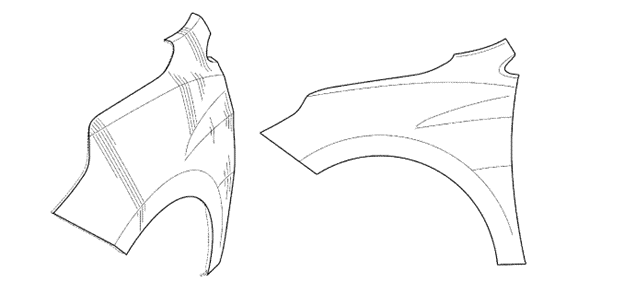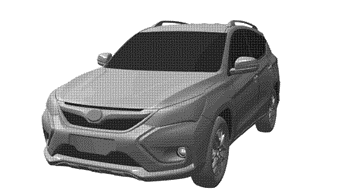The United States Court of Appeals for the Federal Circuit has overhauled the standards for assessing the invalidity of design patents based on obviousness under 35 U.S.C. § 103. The case, LKQ Corporation v. GM Global Technology Operations LLC, involved a dispute over the validity of a design patent held by GM for a vehicle’s front fender. The court’s ruling marks a significant shift away from the long-standing Rosen-Durling test, adopting a more flexible approach in line with Supreme Court precedent in utility patent cases.
Background and Legal Context
The appeal arose from an inter partes review (IPR)1 proceeding initiated by LKQ Corporation and Keystone Automotive Industries, Inc. against GM’s U.S. Design Patent No. D797,625 (“the ’625 patent”). The ’625 patent claims the ornamental design of a front fender shown below:

LKQ argued that the ’625 patent was invalid due to prior art, citing U.S. Design Patent No. D773,340 (“Lian”) and a promotional brochure for the 2010 Hyundai Tucson. The Lian Patent is shown below:

The PTAB had previously ruled in favor of GM, concluding that LKQ had not met the burden of proving the patent’s invalidity based on anticipation or obviousness. The PTAB applied the Rosen-Durling test, a two-step framework used for decades to evaluate the obviousness of design patents. The decision was appealed to the Federal Circuit, where a three-judge panel affirmed the PTAB’s decision.
The Old Test Rosen-Durling: A Rigid Framework
The Rosen-Durling test required that:
- A primary reference must be “basically the same” as the claimed design.
- Secondary references must be “so related” to the primary reference that features in one would suggest the application of those features to the other.
This rigid framework restricted the scope of prior art considered in design patent cases, making it difficult to succeed on challenging the validity of a design patent on the grounds of obviousness.
Federal Circuit’s Decision: A New Approach
In its en banc decision,2 the Federal Circuit overruled the Rosen-Durling test, finding it inconsistent with the flexible approach mandated by 35 U.S.C. § 103 and Supreme Court precedents, particularly KSR International Co. v. Teleflex Inc., 550 U.S. 398 (2007). The court emphasized that the assessment of design patent obviousness should follow the broad and flexible framework outlined in Graham v. John Deere Co. of Kansas City, 383 U.S. 1 (1966), which is used for utility patents.
In accordance with the Supreme Court’s decision in KSR, the new approach requires a fact-based inquiry considering:
- The scope and content of the prior art.
- The differences between the prior art and the claimed design.
- The level of ordinary skill in the relevant art.
- Secondary considerations such as commercial success and industry praise.
Conclusion
The LKQ decision aligns the evaluation of design patents with the broader standards applied to utility patents embracing a flexible, fact-based approach to obviousness.
- An IPR is an administrative challenge before the Patent Trial and Appeal Board (PTAB) regarding the validity of a patent. ↩︎
- An en banc decision involves reconsideration of the three-judge panel’s decision by the entire Federal Circuit. ↩︎



